Technology
Where Are Full Drive-by-Wire Cars?
by Jitesh Gandhi on Mar.07, 2010, under Life, Technology
My biggest regret since my accident was not driving. My rehab was moving so quickly in the beginning I thought I could easily get a wheelchair in and out of a car (like a Mustang) instead of getting a minivan. Way cooler, and at 16 or 17, that’s all that mattered. At the time (1995), getting a new minivan with a lift was $40,000, roughly 3x more than my parents had paid for their last car.
Once college started, I was using public transportation to and from campus. It was basically door-to-door and very convenient. When I started working, I worked in the same city as my Dad, so we commuted together. Then I started to work from home. So, nearly 15 years later, I don’t own a car. It’s the primary contributor to my total lack of a social life and that is why I do wish I had started driving when I started college. I’d be a whole lot more social now. I plan to have that change this year.
I started to look for a van last year. I was shocked to find out that the only thing that has changed in all this time is the price, and it has just gone up. Minivans and the conversions both cost more. I didn’t exactly expect a major auto-manufacturer to mass produce these types of vehicles by now, but I thought technology might be a little further along.
If someone wanted a full drive-by-wire system for their car (electronic steering, acceleration and braking), there is one company that makes the necessary equipment and it will cost in the neighborhood of $50,000. It’s a pretty sad state of affairs in the industry. You buy a brand new van and then pay $20,000 to have major modifications made to it to drop the floor. I don’t expect an auto manufacturer to tool a line to produce vans that would be equipped with lifts, but surely these companies can have some type of collaboration to reduce the costs.
As evidenced by the Toyota problems, common cars now have electronic throttle and braking. No one has worked with a manufacturer to integrate the acceleration/braking controls into this system. It would allow for much simpler systems to accelerate and brake. Toyota also has cars (Lexus LS, 3rd Generation Prius) that have parking assist systems that can automatically steer the car for parallel and reverse parking. I couldn’t find details on exactly how those systems control the steering wheel, but clearly a computer is sending the signals and the wheel is turning. It seems the technology is here, but no one is making use of it to bring new/better controls for vehicles that require hand controls.
I’m fortunate that I only need a minimum amount of adaptive equipment to drive, but for many people, there is a very large price barrier to drive and be more independent. This seems like an area where the first entrant could have a major advantage. They could create exclusive agreements with manufacturers to work with their engineers and get their systems to inter-operate at a computer level. The agreements could be win-win for both sides.
Keeping Specific File Types Out of My Recent Documents
by Jitesh Gandhi on Feb.28, 2010, under Software, Technology
In Windows, the My Recent Documents Start Menu item is useful and productive. It allows you to quickly open back up an item you were recently working with. Unfortunately, for some users (like me), it can get filled up with files you don’t want in there. In my case, it’s mostly media files (audio, video, pictures). If your application doesn’t stop the files from showing up there, then it can reduce the effectiveness of recent documents.
I tried to find a way to stop these files from being listed. I found some applications you can run to clean up what is shown and some ideas for simple scripts. But again, you have to manually run them after the fact. Finally after some digging, I found a way to prevent them from being listed in the first place.
I’m going to preface my instructions with Microsoft’s registry warning:
Warning Serious problems might occur if you modify the registry incorrectly by using Registry Editor or by using another method. These problems might require that you reinstall the operating system. Microsoft cannot guarantee that these problems can be solved. Modify the registry at your own risk.
I’m going to include an example using the image file format JPG (*.jpg files)
- Open the windows registry (Start->Run…, regedit, OK).
- Navigate to HKEY_CLASSES_ROOT.
- Locate the extension for the file type you don’t want to show up in My Recent Documents (.jpg).
- There will be a (Default) key that points to the application that handles these files (on my machine, it is jpegfile).
- Navigate to the value for (Default) within HKEY_CLASSES_ROOT (further down).
- Locate the EditFlags key. If it does not exist you can create one (Edit, New, DWORD Value).
- If the EditFlags Type is REG_DWORD, follow this step and ignore the next step. Change the 3rd value (from the left) from a 0 to a 1. Make sure that the Base is Hexadecimal. In the example above, change the value from 00010000 to 00110000. If it is already a 1, do nothing.
- If the EditFlags Type is REG_BINARY, follow this step. Change the 5th value (from the left) from a 0 to a 1. Make sure that no extra values are added (there should only be 8 characters). An example would be to change the value from 00 00 01 00 to 00 00 11 00. If it is already a 1, do nothing.
- Press OK and exit the registry. (You can repeat this procedure for all the file extensions you wish to keep out of My Recent Documents (e.g. mp3, mpg, avi, wmv, flv, mkv, wav, jpg, gif, bmp, zip, etc.)
This works for Windows XP, Windows Vista and Windows 7. I’m not sure about Windows 2000 and older. Also, for Windows 7, this will also prevent the file from showing up in the Recent or Frequent category of that application’s Jump List.
For the technically minded who want further details on what they are doing, here they are. You are setting a File Attribute Flag, specifically the FTA_NoRecentDocs flag. Because this is the only flag set on that byte, you can simply toggle from 0 to 1. If other flags used this byte, it would become necessary to “OR” all the bits. This is also why you leave all the other values as they were. Finally, the difference between DWORD and BINARY is the position of the least significant byte. In DWORD, the least significant byte comes first. In BINARY, the least significant byte is last.
UPDATE: I have recently discovered that if you upgrade the application or install a new application to handle those files that the registry values could be reset/erased. For example, upgrading Quick Time caused mov and mp4 files to start showing up in My Recent Documents again. So I had to re-do the procedure above. Good thing I wrote it up for future reference. :)
Quick Format or Regular Format
by Jitesh Gandhi on Feb.07, 2010, under Computer Hardware, Technology
It has been a while since I had installed a new hard drive. I bought a 2 TB hard drive for media. In Windows I initialized the disk, partitioned and formatted it. Well, as the formatting was taking longer and longer I thought I’d check if that was normal. (It ended up taking 7 hours.)
Some people were recommending a quick format for new drives. That would’ve taken no time at all. I think I got to the bottom of it, and despite taking so long (I would’ve done it overnight to save time had I known), I think the regular format is best.
The quick format basically sets up the disk for use. The thinking of some is that since the disk is new and empty, there’s no need to do a full format (writing to the entire drive).
The regular format checks for bad sectors. This is what ends up taking so long. On the surface, it may seem like modern hard drives don’t have bad sectors (unless they are going bad), but in reality they do. The manufacturers set aside space to re-map bad sectors to so that from Windows perspective, the drive has no bad sectors. So the regular format makes that initial sweep of a new drive to discover any bad sectors before you put it to use. Quick format is better suited for a drive that was fully formatted previously.
Tablet Follow-Up
by Jitesh Gandhi on Feb.06, 2010, under Computer Hardware, Technology
Following up on my last post on the iPad, I came across some tablet related items that I liked.
The first was an announcement of an iPad look-alike that runs Windows 7 from a company called ExoPC. The slate is quick to point out that it will have “full support of all formats including Flash and Silverlight”. I’m not sure how the performance of it will be, but if it is smooth, I think it will deliver a good experience. The screen resolution is lower, which does hurt it. Fortunately, it is only reduced in one direction, so it should not hurt the web experience. The integrated web cam makes a lot of sense but it doesn’t mention a microphone. If it includes that, then you can run Skype on it. Weaker battery life and no 3G, but it has USB. Since it is running Windows 7, you will have full control of the tablet and won’t be locked in to Apple everything.
The second was a semi-critique of the iPad. I thought it was a good way to explain why the product seems like such a disappointment. I also like the simplicity in the statement “”With this, you can finally…” to determine how innovative a product is.
The final item was concept UI that Google put up a couple days before the iPad announcement. After the ipad announcement, my brother and I felt that Google was best positioned to directly challenge the iPad because they have their own mobile OS (Android) and are working on their own Chrome OS. A couple days later, it was reported Steve Jobs said “We did not enter the search business. They entered the phone business. Make no mistake they want to kill the iPhone.” in reference to Google during a company town hall meeting. He then tossed in “I want to go back to that other question first and say one more thing, he says. This don’t be evil mantra: ‘It’s bullshit.'” for good measure. I don’t think he’d waste his time talking about Google if he didn’t see them as a real threat.
All this talk of tablets also has me thinking. Multi-touch is not the best friend of people with physical disabilities. The gestures should really have an ability to be customized to allow those with limitations to decide what gestures are most important or maybe even different ways to perform the gesture to enable the same action.
Using the Flex Bay in a Dell Precision T5500
by Jitesh Gandhi on Feb.06, 2010, under Computer Hardware, Technology
I wanted to add a hard drive to my PC for additional storage of media. I plan to mirror my primary drive and I don’t want to clutter it up with media. I want to use it only for applications and work. The Dell Precision T5500 in a mini-tower configuration has what Dell calls a flex bay. You can have an internal drive or an external drive in that bay.
I’ve had good luck with Dell service manuals in the past, but the one for the T5500 is of no real help when it comes to the drive bays, especially the flex bay. It took a little bit of figuring out, but I managed to get the hard drive installed, so I thought it might help others to explain how I did it.
Dell has good instructions in their service manual for the T5500 for some of the steps. I will also make use of some of their pictures as well. So here we go.
- Follow the service manual for removing the Cover (pulling the panel completely away makes it easy to lift out).
- Follow the service manual for removing the Front Bezel (this requires force and it helps to have someone hold the switch so you can hold the case and slide the bezel).
- Follow the service manual for removing the Drives Bezel.
- My machine had only one optical drive, so there were metal covers over the second optical bay (5.25″) and the flex bay (3.5″). Pull on the “tab” (it’s the blue sticker attached to the metal covers in the picture above) to remove the metal cover. It’s in there pretty tight. My “tab” was not placed correctly and broke. If that happens, you can remove the one above it in the optical bay and then pull out the flex bay cover by getting your hand behind it. Worst case, both “tabs” break and you can remove the optical drive and then remove the two covers by hand. They all are set into grooves that act as rails for the screws.
- On the back of the drives bezel there are screws that you need to use on the hard drive. Remove the four at the bottom around the flex bay grill. Screw those into the the forward most holes on your hard drive (2 on each side) leaving the rear ones (closest to the power/data connectors) empty.
- Slide the hard drive into the flex bay grooves while holding down the sliding plate that locks the drives in place. If everything is done right, the hard drive will be locked into place and you can connect the power/data cables (it is helpful to disconnect the power cable from the optical drive to make it easier to connect the power cable to the hard drive, just be sure to reconnect the power cable to the optical drive). I bought a 0.4m (~16″) SATA cable which was way longer than needed. A 6″ cable would be long enough.
- Slide the metal cover(s) back into place to cover up the bay(s).
- Follow the service manual for replacing the Drives Bezel (the left side needs to be put in place first and the right side near the USB ports will not snap into anything, the front bezel will hold it down).
- Follow the service manual for replacing the Front Bezel (make sure everything is aligned and in their grooves before sliding it in place, if you don’t, remember that there is a release switch to remove it).
- Follow the service manual for replacing the Cover.
- Hook your PC back up and when you turn it on, hit F2 to enter setup and make sure that the SATA port that you connected the drive to is enabled.
Apple iPad
by Jitesh Gandhi on Jan.30, 2010, under Computer Hardware, Technology
A couple people have asked me what I thought about the iPad, so I figured I’d throw my thoughts out here.
- While keeping up with the live event through Engadget’s live blog of the event I was underwhelmed and just got a general feeling that Apple (and Steve Jobs) thinks everything they do is revolutionary and amazing. I think it’s a trait you certainly want a company and CEO to have, but a sense of reality would be good too. You can introduce a new product with the proper amount of enthusiasm.
- My immediate impression was it is a big iPhone. After further reflection, it’s a big iPhone without calling features.
- I think it is essentially Apple’s netbook. They aren’t going to be making a laptop below $1k.
- I think it is an OK product. The weight at 1.5 lbs and battery life of 10 hours are excellent features. The simplicity of use is also very good. I’m assuming the keyboard will be very well engineered like the iPhone keyboard.
- It seems to be perfect for people to use around the house or on the go. Web surfing, e-mail, calendar and applications. I assume you can put it in standby instead of having to shut it down which basically gives you instant on access. Want to check something online real quick, it’s ready right away.
- Apple decided to use the iPhone OS instead of OS X. Without “jail breaking” it, you have a limited world. App Store programs and built-in programs. There is no flash support (likely because Adobe hasn’t decided to make the resource usage anywhere near reasonable for its functionality). Everyone isn’t going to make their site work with the iPhone like YouTube did. This does open the door for Microsoft’s SilverLight.
I decided it wasn’t for me pretty fast. I’d rather have something running a real OS. In the $500-$830 range, you’re looking at Windows 7 or you can build a Hackintosh. However, you’re not going to find anything nearly that light or with that kind of battery life. There are some trade-offs in either direction. From my standpoint, the iPad would’ve been a much better product if it ran OS X instead of the iPhone OS. However, this is also why the iPad is different from tablet PCs. Tablet PCs run Windows instead of a mobile OS. The only difference from a laptop is a user interface that wasn’t designed specifically for a tablet PC.
Migrating Passwords in Firefox 3.6
by Jitesh Gandhi on Jan.24, 2010, under Software, Technology
I’ve been using Firefox going back to the days when they had changed the name from Firebird to Firefox. When my PC died, I had to rebuild a new one. I was backing up my Firefox profile at the time, so I only had to restore it. It took a little bit of manual work to do it, but it wasn’t a big deal. However, Firefox now took at least 20 seconds to fully exit (the window would go away, but the process was still running) and often 1 to 2 minutes. This is on top of the huge amounts of memory (physical and virtual) it eats up over prolonged usage.
I decided with my new PC, I would just discard my profile. It has been updated, upgraded and manually maintained through multiple Firefox versions. Add multiple extensions being installed and uninstalled over that time and it is time to start fresh. The one thing I did not want to lose were all my saved passwords. This turned out to be pretty straightforward. After I installed Firefox 3.6 (this method will also work with 3.5, but I’d recommend that whatever version you do this with, make sure the old one and new one are the same), I copied the key3.db and signons.sqlite files from the old profile folder to the new profile folder.
After writing the stuff above, I went to see if I could find a page describing the files that comprise a profile to link that would help people copy over other parts of their profile they want to keep while also having a clean install. You can read it here, and it points out exactly which files you need to move the passwords. There is also a guide on backing up and restoring profiles on that site as well.
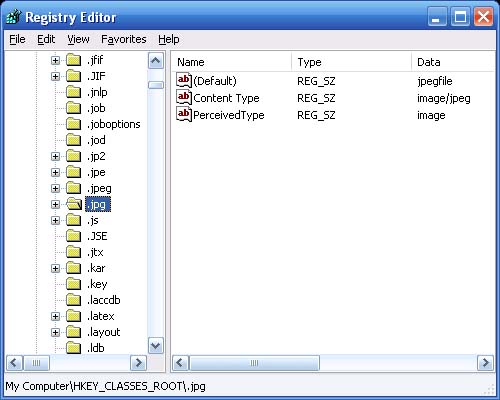
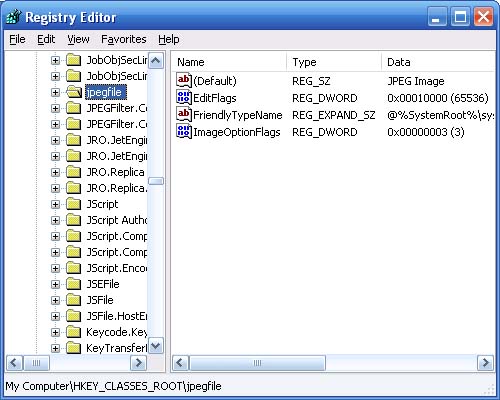
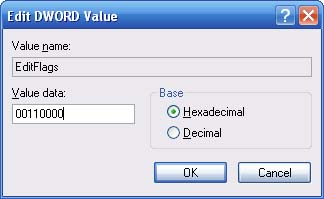
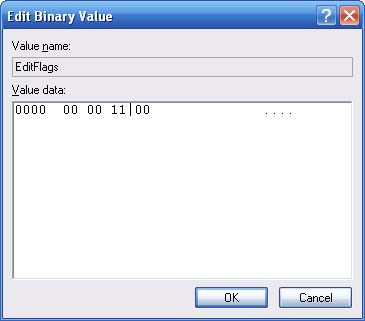
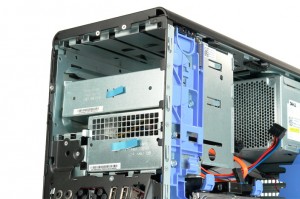
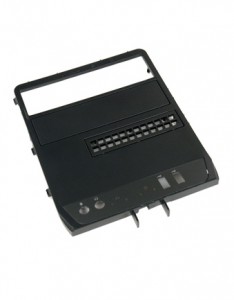
 Facebook
Facebook LinkedIn
LinkedIn